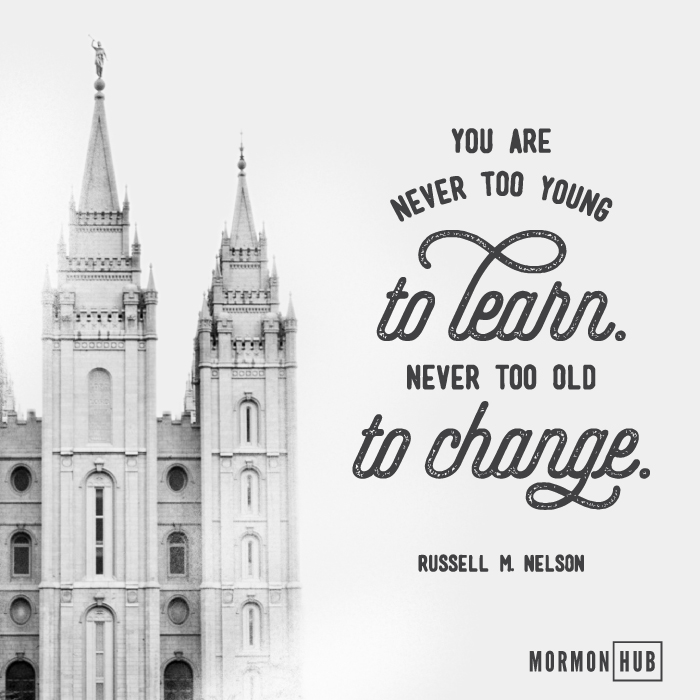Post # 34 – To Have or Not to Have
Breast Reconstruction
Surgery
Dear family and Friends
I have been thinking about my cancer treatment plan and what i have covered with you so far --my diagnosis, the tests, the Red Devil –
Chemotherapy, the Mastectomy, Radiation therapy, my second stage Chemo therapy,
but I don’t think we have really talked about having breast reconstruction – so
I thought that might be a good thing for today’s post. I want you to have as
much information as you need to make this decision.
I went out to see
a plastic surgeon after I was healed up from my radiation treatment to see what
needed to happen next. I was told at that time what my options for breast
reconstruction surgery were. I was also told that I needed to wait a year because the
radiation was still working in my body. Do you think maybe that is why I have killed two phones by keeping them in my pocket all the time:)


Actually, both of the methods she
described sounded pretty painful and time consuming as far as recovery is
concerned – I am not so sure that I can afford to be off work for as long as
would be necessary for me to heal enough to get back to good working condition.
Here is an article I would like to share with you I got the following article from the Cancer Society:
Should I Get
Breast Reconstruction Surgery?
A woman who has surgery to treat
breast cancer might choose to have additional surgery to rebuild the shape and
look of her breast. This is called breast reconstruction surgery. If you are
thinking about having reconstructive surgery, it is best to talk about it
with your surgeon and a plastic surgeon experienced in breast
reconstruction before you have surgery to remove the tumor or
breast. This lets the surgical teams plan the best treatment for you, even if
you decide to wait and have reconstructive surgery later.
Help and support from someone who’s been there
No matter which options you choose, it’s
important to know that there is advice and support out there to help you cope
with the changes you’re going through. Speaking with your doctor or other
members of your health care team is often a good starting point. If you would
like to talk with someone who has had your type of surgery, ask about our Reach to Recovery®program. Reach To Recovery volunteers are breast
cancer survivors trained to support others facing breast cancer, as well as
those who are thinking about having breast reconstruction. They can give you
suggestions, reading material, and advice. Ask your doctor or nurse to refer
you to a volunteer in your area, or call us at 1-800-227-2345.


Benefits of breast reconstruction
A woman might choose to have breast
reconstruction for many reasons:
·
To make her chest look
balanced when she is wearing a bra or swimsuit --- this would be my reason for this decision – my little grandson
asked me when I would e able to go swimming with him again. Now I do not swim,
but I used to go into the water with him and we would play together in the
water .. but it is kind of difficult to wear aa swimsuit with only one side to
hold it up. I could be wrong, but that is my thinking on this one.
·
To permanently regain
her breast shape
·
So she won’t have to
use a breast form that fits inside the bra (an external prosthesis)
·
To be happier with her
body and how she feels about herself – I am perfectly content with how I
am now, but I do not like to go out in public without both sides looking
somewhat matched. Some days I do better than others. I am fine going around my
family in my pajamas, but not when someone other than my immediate family comes
over, then I hurry to get myself together😊
Breast reconstruction often leaves scars, but
they usually fade over time. Newer techniques have also reduced the amount of
scarring. When you’re wearing a bra, your breasts should be alike enough in
size and shape to let you feel comfortable about how you look in most types of
clothes. I have a very unique prosthesis and I struggle some days to get it
to stay put and not have one higher or lower than the other one.
After a mastectomy, breast reconstruction can
make you feel better about how you look and renew your self-confidence. But
keep in mind that the reconstructed breast will not be a perfect match or
substitute for your natural breast. If tissue from your tummy, shoulder, or
buttocks was used as part of the reconstruction, those areas will also
look different after surgery. Talk with your surgeon about scars and changes in
shape or contour. Ask where they will be, and how they will look and feel after
they heal.


Some important things to think about
·
You might have a
choice between having breast reconstruction at the same time as the mastectomy (immediate reconstruction) or at a later time (delayed
reconstruction). This was not a choice that I was given because of the radiation
to follow the surgery as immediately as possible after healing.
·
Some women don’t want
to have to make decisions about reconstruction while being treated for their
breast cancer. If this is the case, you might choose to wait until after your
breast cancer surgery to decide about reconstruction.
·
You might not want to
have any more surgery than is absolutely needed.
·
Not all reconstructive
surgery is a total success, and the result might not look like you’d hoped.
·
The cancer surgery and
reconstruction surgery will leave scars on your breast and any areas where
tissue was moved to create the new breast mound, such as the buttocks, tummy,
or shoulder areas .
·
A rebuilt breast will
not feel the same as the natural breast. The sites tissue was taken from to
rebuild the breast might also lose some sensation. Over time, the skin might
become more sensitive, but it won’t feel the same as it did before the surgery.
·
You might have extra
concerns if you tend to bleed or scar more than most people.
·
Breast skin or flaps
might not survive after reconstructive surgery. This tissue death is
called necrosis. If it happens, healing is delayed, and more
surgery is often needed to fix the problem.
·
Healing could be
affected by previous surgery, chemotherapy, or radiation therapy. It can also
be affected by smoking, diabetes, some medicines, and other factors. This one might ne
a concern for me considering I am still receiving chemotherapy every three
weeks which keeps my immune system lower than it otherwise would be.


·
Surgeons might suggest
you wait to have reconstruction, especially if you smoke or have other health
problems. It’s best to quit smoking at least 2 months before reconstructive
surgery to allow for better healing. You might not be able to have
reconstruction at all if you are obese, too thin, or have blood circulation
problems.
·
The surgeon might
suggest surgery to reshape your other breast to match the reconstructed breast.
This could include reducing or enlarging its size, or even surgically lifting
the breast. This was one of the things that the plastic surgeon had said,
was that she would have to reduce the size of my other breast because they did
not make reconstructed ones that big😊
·
If it’s known at the
time of diagnosis that a woman will need radiation as part of her treatment,
the types of immediate reconstruction surgery she can have might be
limited. Certain types of reconstruction done before radiation can cause
problems and lower the chances the rebuilt breast will look and feel as natural
as possible, after the radiation is given. You should discuss the best
options for you with your surgeon before surgery.
At the time of my
mastectomy I was under the impression that both breasts would be removed and it
wasn’t until just prior to the surgery that I was told that is was unnecessary
to take them both. I was going to go ahead and have my surgeon remove both –
then I could have any size breasts I chose afterwards, but I was afraid that
the insurance would not cover the removal of the second breast because it
wasn’t diseased and I could not afford
that– so I opted to keep the one and have only the cancerous one removed. And
so here I am one sided 😊
·
Knowing your
reconstruction options before surgery can help you have more realistic
expectations for the outcomes.


Can breast reconstruction hide cancer or make it come back?
Studies show that reconstruction does not make
breast cancer come back. If the cancer does come back, reconstructed breasts
should not cause problems finding the cancer or treating it.
If you are thinking about breast
reconstruction, either with an implant or flap, you need to know that
reconstruction rarely, hides a return of breast cancer. You should not consider
this a big risk when deciding to have breast reconstruction.
Risks of breast reconstruction
Common potential side effects and risks of
reconstruction surgery can be found in What to Expect After Breast Reconstruction Surgery.
Certain types of breast implants can be linked
to a rare kind of cancer, known as anaplastic large cell lymphoma
(ALCL). It is sometimes referred to as breast implant-associated anaplastic
large cell lymphoma (BIA-ALCL). This lymphoma happens around 8 to 10 years
after the implant was placed and more often if the implants have textured
(rough) surfaces rather than smooth surfaces. If ALCL does show up after
an implant, it can show as a lump, a collection of fluid near the implant,
pain, swelling or asymmetry (uneven breasts). It usually responds well to
treatment.


Breast
Reconstruction Alternatives
What if I
choose not to get breast reconstruction?
Some women who have had a mastectomy as part of their
breast cancer treatment decide not to have any type of breast reconstruction.
They might decide they don’t want to have any more surgeries
than they need to treat the cancer, or that they want to be able to get back to
their normal activities as soon as possible. Some women are just more
comfortable with how they look and feel after the surgery to remove their
cancer. Cost might also be an issue, especially for women who don’t have
insurance coverage. If you change your mind later, reconstruction is usually
still an option. But keep in mind that it may be easier to get the result you
want if you make the decision before you have your mastectomy .I considered the length of time for the recovery of having
both breasts removed , but I would have needed more help from someone else for
my daily needs, so this is another reason I opted to keep the healthy one. I
could not afford to be off work for a longer period of time for healing and I
did not want to burden someone else with more of my care unnecessarily.
For other women, breast reconstruction might be difficult, or
even not possible, because of other health issues they have. For example, you
might not be able to have reconstruction if you are obese, too thin, or have
blood circulation problems.
Women who don’t have breast reconstruction after surgery have
two main options:
- Using
a breast form or prosthesis (inside the bra or attached to the body to
wear under their clothes) I wasn’t sure that the
insurance would pay for this and reconstruction surgery and I needed to
get back to work before I could get in to see someone about getting
measured for a prosthesis – and they do not make them big enough to match
the one I still have --- so I made up one of my own and have been doing
okay with it since then --- sort of on most days😊
- Going flat (not wearing a breast form) this was not an option for me with still having one breast, that'stoo big to hi

Using a
breast form or prosthesis
A breast form is a prosthesis (artificial body part) worn either inside
a bra or attached to the body to simulate the appearance and feel of a natural
breast. Wearing a breast form is an option for women who have decided not to
get reconstructive surgery but want to keep the same look under their clothes.
If you haven’t decided about reconstruction, or are having reconstruction
later, you might decide to use a breast form temporarily.
Most breast forms are made from materials that mimic the
movement, feel, and weight of natural breast tissue. A properly weighted form
provides the balance your body needs for correct posture and anchors your bra,
keeping it from riding up. At first, these forms may feel too heavy, but in
time they should feel natural.
If you are planning to use a breast form, your doctor will tell
you when you have healed enough to be fitted for a permanent breast form or
prosthesis.
Choosing
the right bra for your breast form
The right bra for you may very well be the one you have always
worn. It may or may not need adjustments. If there is tenderness during
healing, a bra extender can help by increasing the circumference of the bra so
that it does not bind the chest too tightly. Heavy-breasted women can relieve
pressure on shoulder straps by slipping a bra shoulder pad under one or both
straps.
If you decide to wear your breast form in a pocket in your bra,
you can have your regular bra adapted. There are also special mastectomy bras
with the pockets already sewn in. If the breast form causes any kind of skin
irritation, use a bra with a pocket. If your bra has underwires, you may be
able to wear it, but be sure to clear this with your doctor.
If you want to wear your prosthesis under sleepwear but
would like something more comfortable than a regular bra, look for a soft bra,
sometimes called a leisure or night bra. These are in most department stores.


Finding and paying for breast prostheses
Prices for breast forms vary considerably. High price doesn't
necessarily mean that the product is the best for you. Take time to shop for a
good fit, comfort, and an attractive, natural appearance in the bra and under
clothing. Your clothes should fit the way they did before surgery.
Insurance coverage of breast prostheses can vary. Be sure to
contact your health insurance provider to find out what will be covered and how
you must submit claims. Also, ask your doctor to write prescriptions for your
prosthesis and for any special mastectomy bras. When purchasing bras or breast
forms, mark the bills and any checks you write "surgical." Medicare and Medicaid can be used to pay for some of these
expenses if you are eligible. The cost of breast forms and bras with pockets
might be tax deductible, and also the cost if you have a bra altered. Keep careful records of all related
expenses. So far, I have not experienced this
as I said before I came upon my unique prosthesis, in the beginning I tried a lot of
various materials before I found a few things to put together that worked for
me. I did consider this cost before I made my decision.
Some insurance companies will not cover both a breast prosthesis
and reconstructive surgery. That can mean that if you submit a claim for a
prosthesis or bra to your insurance company, in some cases the company will not cover
reconstruction, should you choose this procedure in the future. Make sure you
get all the facts before submitting any insurance claims. -- this was my concern as well, that is why I have not gone
in to find out about getting a real prosthesis. It may all sound a little weird,
but my own designed on -it is working for me so far😊


Going
flat
Some women, who do not have reconstruction surgery, decide not
to wear a breast form, either.
For most women, there aren’t likely to be any added health
issues from going flat, especially if both breasts were removed. But if you’ve
only had one breast removed, you might notice issues with balance, posture, or
back pain, especially if you’ve always had large breasts. This is one reason
some women prefer to wear a breast form – to balance out the weight on their
chest. Talk to your doctor about your options if you think this might be an
issue for you.
Some women might use a breast form when out but not when at
home. This might be because they find breast forms uncomfortable or too
expensive, or just because they’re comfortable with how they look and feel
without a breast form and don’t feel the need to wear one.
If the idea of going flat appeals to you but you’re worried
about what others might think, try going without a breast form in different
situations, such as at home, out with friends, or while out running errands.
You might find that most people won’t notice a difference. If you find you
still feel self-conscious, you can always go back to wearing a breast form.
If you decide to go flat, you might want to consider wearing
clothing that might help you feel more comfortable with your appearance. Try
wearing tops that are not tight fitting and that have busy patterns, or layer
sweaters or jackets over close-fitting tops. Scarves and shawls can also cover
all or part of your chest.
Some women might like the idea of going flat but are
uncomfortable about not having nipples. Some companies now make nipple
prosthetics, which are made of silicone or other materials and look and feel
like real nipples. They can be attached to the chest and then taken off when
you choose. My friend's wife had
breast cancer years ago and has had a process over time getting hers done. He
said she was getting ready to get her nipples Tattooed on the last time I spoke
with him about it.


Breast
Reconstruction Options
Women who have had surgery to treat breast
cancer can choose from several types of breast reconstruction. When deciding
what type is best for you, you and your doctors should discuss factors
including your health and your personal preferences. Take the time to learn
about what options are available to you and consider talking to others who have
had that procedure before you make a decision.
Choosing which type of breast reconstruction to have
If you’ve decided to have breast
reconstruction, you’ll still have many things to think about as you and your
doctors talk about what type of reconstruction might be best for you. Some of
the factors you and your doctors will need to think about when considering your
options include:
- Your overall health (including
issues that might affect your healing, such as smoking or certain health
conditions)
- The size and location of your
breast cancer
- Your breast size -- for me this is an issue that the plastic
surgeon brought up.
- The extent of your breast
cancer surgery—my
surgery was down to the breast bone and all of my lymph nodes as well.
- Whether you will need
treatments other than surgery for your cancer – I still have chemotherapy
treatments every three weeks to keep my cancer from growing.
- The amount of tissue available (for
example, very thin women may not have enough extra tummy tissue to use
this area for breast reconstruction)—I am sure that I have plenty of tissue for
them to choose from.
- Whether you want reconstructive
surgery on one or both breasts – I will need a reduction on the one side and a
reconstruction on the other side.
- Your desire to match the look
of the other breast
- Your insurance coverage and
related costs for the unaffected breast
- How quickly you want to be able
to recover from surgery
- Your willingness to have
potentially more than one surgery as part of the reconstruction – this is a concern for me as
well because I will need to go to another city to have the surgery done
and then there is the time off from work to heal and the plastic surgeon did say that one
of the reconstructive surgeries will take more than ne surgery to complete
it.
- How different types of
reconstructive surgery might affect other parts of your body -- the plastic surgeon talked about one that
would take muscle from my abdomen and one that would take muscle from my
back.
Your surgeon will review your medical history
and overall health and will explain which reconstructive options might be best
for you based on your age, health, body type, lifestyle, goals, and other
factors. Talk with your surgeon openly about your preferences. Be sure to voice
any concerns and priorities you have for the reconstruction and find a surgeon
you feel comfortable with. Your surgeon should explain the limits, risks, and
benefits of each option.


Types of breast reconstruction procedures
There are several types of reconstructive
surgery available, and sometimes the process means more than one operation.
Give yourself plenty of time to make the best decision for you. You should make
your decision about breast reconstruction only after you are fully informed.
Two main types of operations can be done to
reconstruct the shape of your breast or breasts:
- Using silicone or saline breast
inserts (known as breast implants) – this would be the one I think they mentioned to do for me.
- Using your own body tissues
(known as tissue flap procedures)
Sometimes the implant and flap procedures are
used in combination to reconstruct a breast.
In addition, nipple/areola tattooing and fat grafting can be done to help make the reconstructed
breast look more like the original breast. The reconstructed nipple and areola
do not have any sensation.


Reconstruction after lumpectomy or partial mastectomy
Most women who have breast conservation surgery
(lumpectomy or partial mastectomy) do not need breast reconstruction. However,
some women might end up having a breast deformity as a result of the cancer
surgery; for example, if a woman has a large tumor in a small breast. These
women may be candidates for different types of breast reconstruction (such
as smaller implants or fat grafting) to reshape the breast. This type of
surgery has outcomes similar to lumpectomy or partial mastectomy without
reconstruction.
Questions to
Ask Your Surgeon About Breast Reconstruction
If you’ve had surgery to treat your breast
cancer and are considering breast reconstruction, it’s important to know as
much as you can about what to expect. Your breast surgeon can help you find a
plastic surgeon who should be able to explain all of your choices and answer
your questions. Here are some questions to ask to help get you started. Be sure
you get all of your questions answered, so that you can make the best decisions
for you about breast reconstruction.
Finding the right plastic surgeon for your breast reconstruction
If you decide to have breast reconstruction,
you’ll need to find an experienced board-certified plastic surgeon. Your breast
surgeon can suggest doctors for you. -- My oncologist referred me to my
plastic surgeon.
To find a board certified plastic surgeon in
your area, or to find out if your surgeon is board certified, contact
the American Society of Plastic Surgeons (ASPS).
Getting a second opinion
It’s common to get a second opinion before having surgery. Don’t rush to get
reconstruction surgery, or even mastectomy, before you know all of your options. It’s more important for
you to make the right decisions based on complete information than to act quickly.
Questions to ask about breast reconstruction
It’s very important to get all of your
questions answered by your plastic surgeon before having breast reconstruction.
If you don’t understand something, ask your surgeon about it. You might want to
take notes or bring a partner or friend with you to the doctor to help remember
what was said and to help ask other questions.


Here are some questions to get you started.
Write down other questions as you think of them. The answers to these questions
may help you make your decisions.
- Can I have breast
reconstruction?
- When can I have reconstruction
done?
- What are the pros and cons of
doing it at the same time as my cancer surgery (immediate reconstruction)
versus waiting (delayed reconstruction)?
- Will reconstruction interfere
with chemotherapy?
- Will reconstruction interfere
with radiation therapy?
- What types of reconstruction
could I have?
- What are the pros and cons with
each option?
- What type of reconstruction do
you think would be best for me? Why?
- What’s the average cost of each
type? Will my insurance cover them?
- How long would it take me to
recover from each type?
- How many of these procedures
have you (plastic surgeon) done?
- What results can I expect?
- Will the reconstructed breast
match my other breast?
- Should I consider surgery on
the other breast as well to help them match?
- Could I have the nipple
reconstructed if I choose to? How would this be done?
- How will my reconstructed
breast(s) feel to the touch?
- Will I have any feeling in my
reconstructed breast(s)?
- What possible problems should I
know about?
- If using a tissue flap, will
there be pain, scars, or other changes in the parts of my body where the
tissue is taken from?
- If I get a breast implant, how
long will it last?
- What kinds of changes to the
breast can I expect over time?
- How will aging affect the
reconstructed breast?
- What happens if I gain or lose
weight?
- Are there any new
reconstruction options that I should know about, including clinical trials?
- Can you show me pictures of
typical results?
- Can I talk with other women who have had the same surgery?
 This sure seems
like a good comprehensive list of questions for us to ask before we make our
decision to have breast reconstruction. I hope this information was helpful for
some of you or those you love. Remember if you are a support person it is good
for you to have this information as well so that you will be prepared ahead of
time and ready to help out where you are needed. here is another website you can go to for more information about breast reconstruction surgery. https://ww5.komen.org/BreastCancer/BreastReconstruction.html
This sure seems
like a good comprehensive list of questions for us to ask before we make our
decision to have breast reconstruction. I hope this information was helpful for
some of you or those you love. Remember if you are a support person it is good
for you to have this information as well so that you will be prepared ahead of
time and ready to help out where you are needed. here is another website you can go to for more information about breast reconstruction surgery. https://ww5.komen.org/BreastCancer/BreastReconstruction.htmlIn one of my next posts I will cover the next phase of this – preparation for breast reconstruction surgery. I did not want this one to be too long for you all. Until then you all have a very good eek and remember we can do all things in the strength of the Lord.
No comments:
Post a Comment